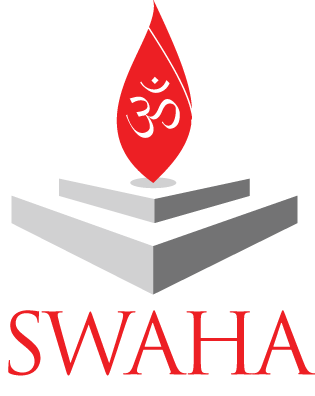There is a fallacy being perpetuated that the youths of our Dharma are leaving and going elsewhere. While we may see many leaving, we sometimes are unaware of the droves that are embracing Sanatan Dharma. We see an increasing number of people from different ethnic and varied religious backgrounds engaging in Hindu practices. The question therefore, is: Why the conversion? Furthermore, why conversion to Sanatan Dharma?
The answer lies in the propagation of Sanatan Dharma by the leadership. Leadership includes not only the Pundits, but the devotees who have become empowered and have developed a passion for their way of life, serving with distinction. Sanatan Dharma is wide, involving many rituals, philosophy, scriptures and traditions. If one were to perform a S.W.O.T. analysis on Sanatan Dharma, traditionally this spread of Sanatan Dharma would be recorded as a weakness, as we would hear the usual cry “Hinduism is too complex and involves doing too many things”. Contrary to that norm, however, is the fact that the range of Sanatan Dharma is not now seen as a weakness but instead as its greatest strength!
Studies in cognitive psychology by the theorist Howard Gardner revealed that individuals learn in a number of ways. He put forward the theory of Multiple Intelligences, which says that people learn through language, music, bodily, logic, inter-personal, intrapersonal, spatial and naturalistic skills. These intelligences drive our passions and so a person who loves music will follow the path of Bhakti Yoga, where he will be lost in the glorification of the divine through Bhajan, Kirtan, dance and musical instruments. Meera and Surdas, two great Bhaktas, had a passion and love for glorification of the Lord through music.
A person driven by the language intelligence will be drawn towards the scriptures: Vedas, Upanishads, Puranas, Epics and indeed the entire range of Sruti and Smriti. He would be inspired by discourses on Sanatan Dharma, steeped in philosophy. He will be said to be following the path of Gyaan Yoga. A person imbued with the spatial intelligence will be drawn by the concept of the cosmos and universe, having a great interest in astrology and astronomy. He may acquire competence in Jyotis and Panchang, being able to calculate Tithi, Nakshatra, Yog, Karan and Vara. A person driven by the bodily and tactile will be attracted to Hath Yoga, which focuses on finding union with God through various bodily postures, which facilitate the movement of the Kundalini Shakti up the Sushumna Nari. The person with this particular intelligence will also be drawn towards rituals and practices, finding spiritual excellence through Puja, Havan, offering of Jal, lighting of deeyas and other practices which require physical action.
Today’s Hindu leaders are aware of this and are changing their teaching style and methods to cater for this range of intelligences. A person is no longer defined as a Hindu only if he performs Puja, or sings Bhajans and Kirtans. Individuals now practise their Dharma based on the area where they feel passion. In so doing, they develop a love for God and Principle, and eventually all reach the same destination.


Jaidath
WOW! Great article!!!!!!!!!!!!!!!!!!
polly
very interesting .
polly
very interesting indeed.
Anita
This article really defines what the roles of Hindus in the current time and it is great to see the parallels being drawn between what ones area of interest is and what intelligences we are aligned with. COOL!!!
Sareka
very very informative….truth at its finest..!